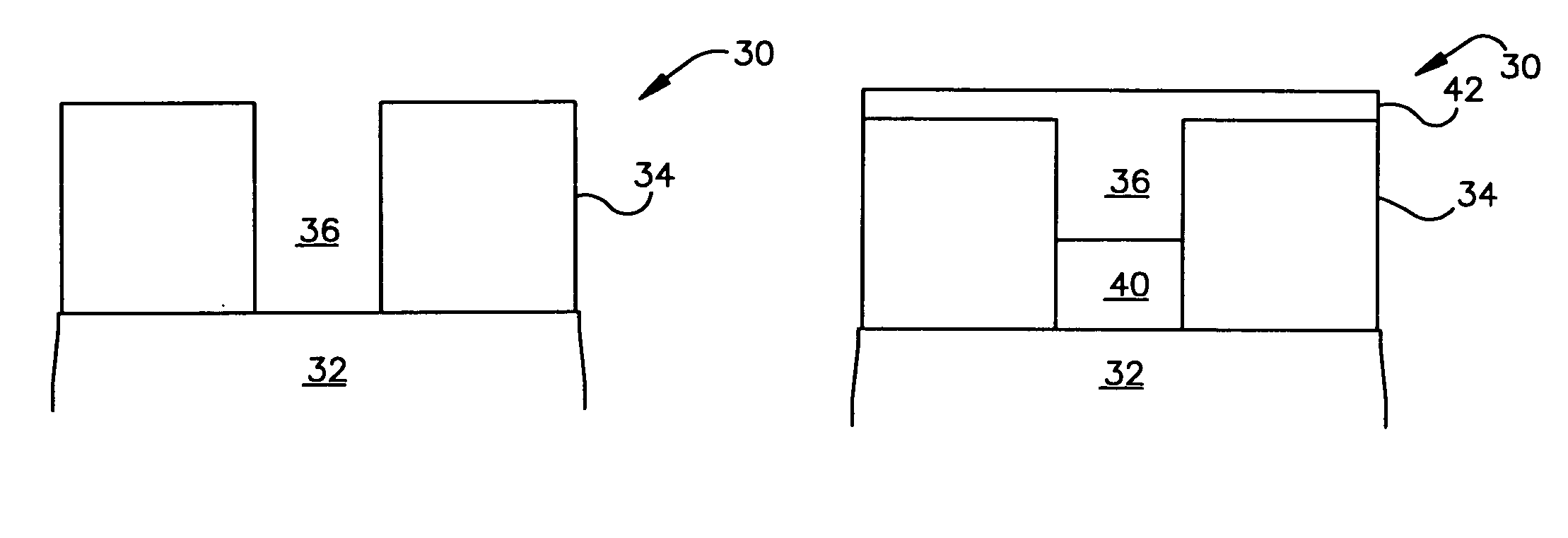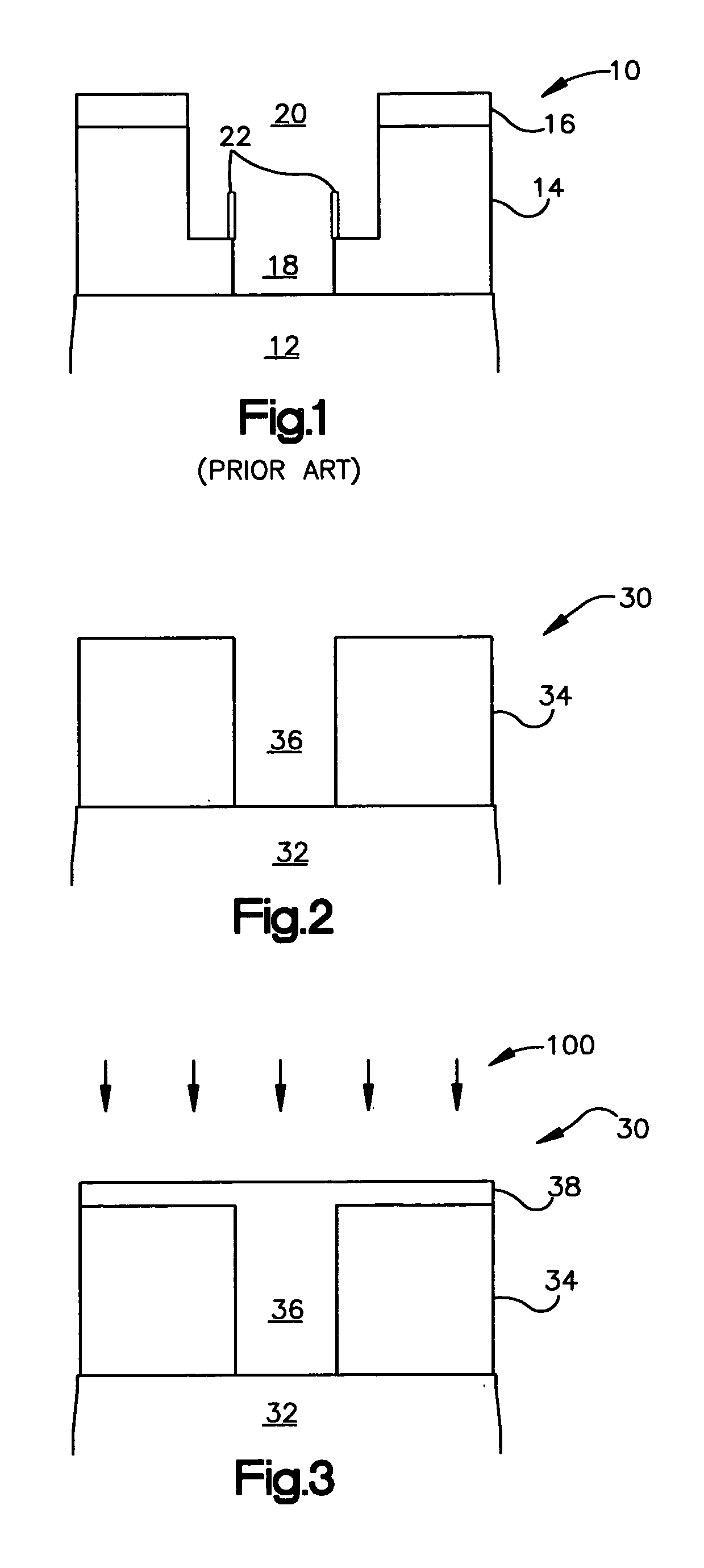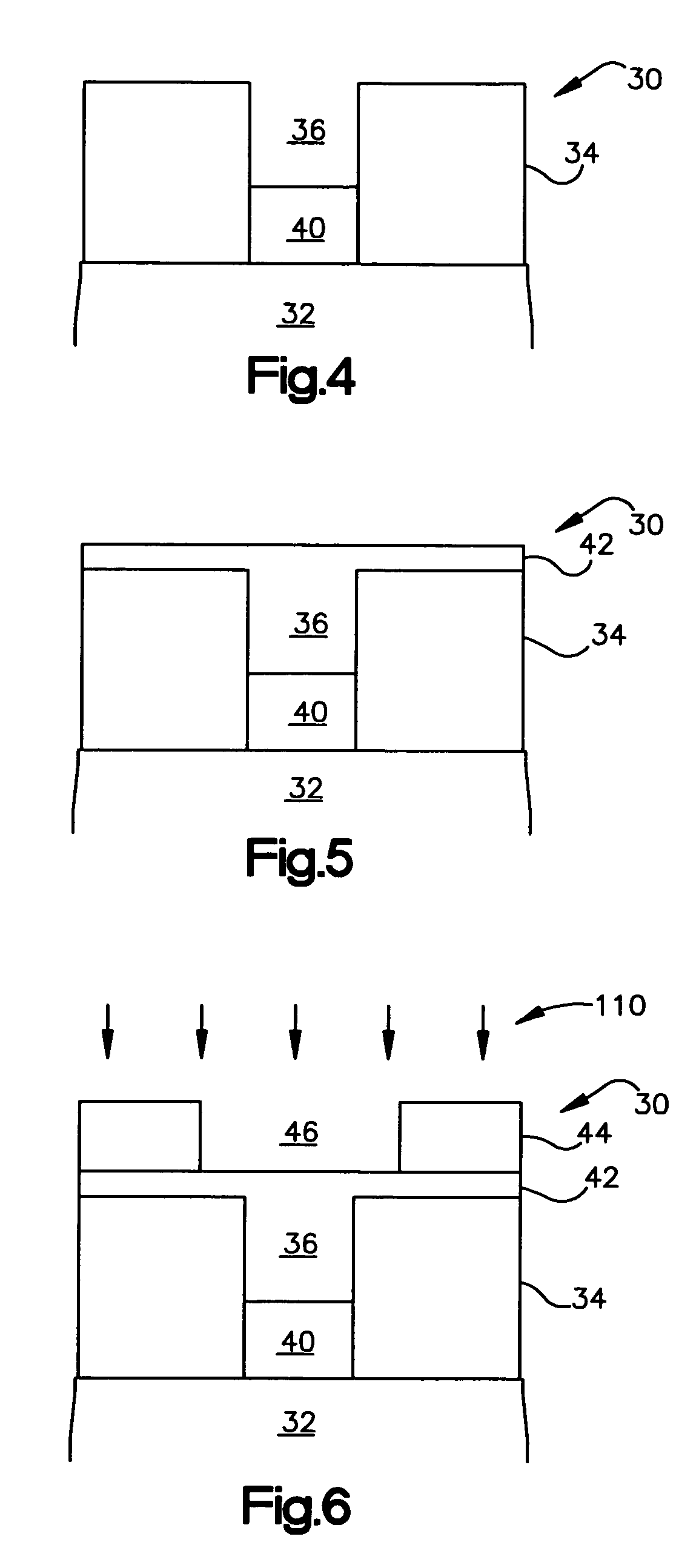Method of eliminating etch ridges in a dual damascene process
a damascene and etching technology, applied in the field of etching ridge elimination in a dual damascene structure, can solve problems such as serious yield/reliability problems
- Summary
- Abstract
- Description
- Claims
- Application Information
AI Technical Summary
Benefits of technology
Problems solved by technology
Method used
Image
Examples
Embodiment Construction
[0022] The present invention relates generally to the formation of interconnects employing a via-first dual damascene process. The via-first dual damascene process employs a via fill material that etches at an etch rate that is within 60% of an etch rate in which an underlying dielectric layer etches for a given dielectric etch chemistry in which the trench and via are being formed. In one aspect of the invention, the via fill material etches at an etch rate that is within 20% of an etch rate in which an underlying dielectric layer etches for a given dielectric etch chemistry in which the trench and via are being formed. The employment of a via fill material with an etch rate that is as substantially (e.g., within 60%, within 20%) as fast as an etch rate of an underlying dielectric layer for a given dielectric etch chemistry substantially prevents the formation of etch ridges or fences. The present invention can be employed in 65 nm, 90 nm and 130 nm nodes.
[0023] In one aspect of t...
PUM
 Login to View More
Login to View More Abstract
Description
Claims
Application Information
 Login to View More
Login to View More - R&D
- Intellectual Property
- Life Sciences
- Materials
- Tech Scout
- Unparalleled Data Quality
- Higher Quality Content
- 60% Fewer Hallucinations
Browse by: Latest US Patents, China's latest patents, Technical Efficacy Thesaurus, Application Domain, Technology Topic, Popular Technical Reports.
© 2025 PatSnap. All rights reserved.Legal|Privacy policy|Modern Slavery Act Transparency Statement|Sitemap|About US| Contact US: help@patsnap.com



